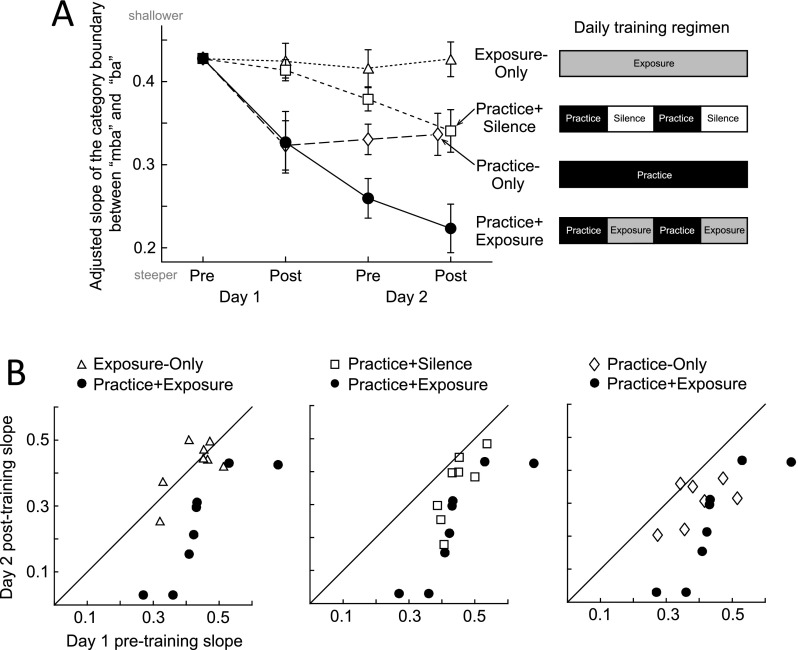FIG. 1.
Acquisition of a non-native category boundary. (A) Mean performance across tests. Mean slope of the non-native category boundary between “mba” and “ba” for native speakers of English across daily pre- and post-training tests for each of four two-session training regimens: Exposure-Only (open triangles; n = 8), Practice + Silence (open squares; n = 8), Practice-Only (open diamonds; n = 7), and Practice + Exposure (filled circles; n = 8). Each box in the schematics represents 60 trials of practice (black boxes), 60 trials of stimulus exposure without practice (gray boxes), or the time span of 60 trials spent in silence (white boxes). The slope of the function is scaled such that the closer the value is to zero, the sharper the category boundary. Error bars indicate + /− one standard error of the mean. Slopes are adjusted to account for individual differences in the slope at pre-training test 1. (B) Individual performance. Raw scaled category boundary slopes between “mba” and “ba” from the day 1 pre-training test (abscissa) and day 2 post-training test (ordinate) for each individual listener. Performance of the Practice + Exposure group (filled circles) is shown with that of the Exposure-Only (left panel; open triangles), Practice + Silence (middle panel; open squares), and Practice-Only (right panel; open diamonds) groups. The key result is that a combination of practice categorizing speech tokens with additional exposures to those tokens without practice (Practice + Exposure) facilitated the acquisition of a non-native category boundary. Learning with this combination was enhanced relative to when the training involved only brief (Practice + Silence) or longer (Practice-Only) periods of categorization practice, even though mere exposure to the speech tokens (Exposure-Only) yielded no learning.

